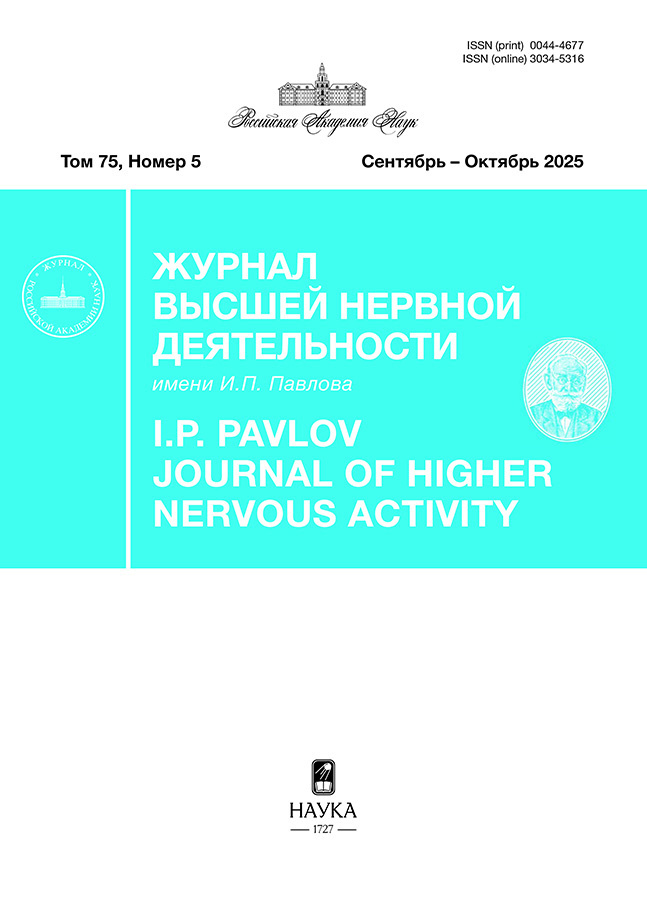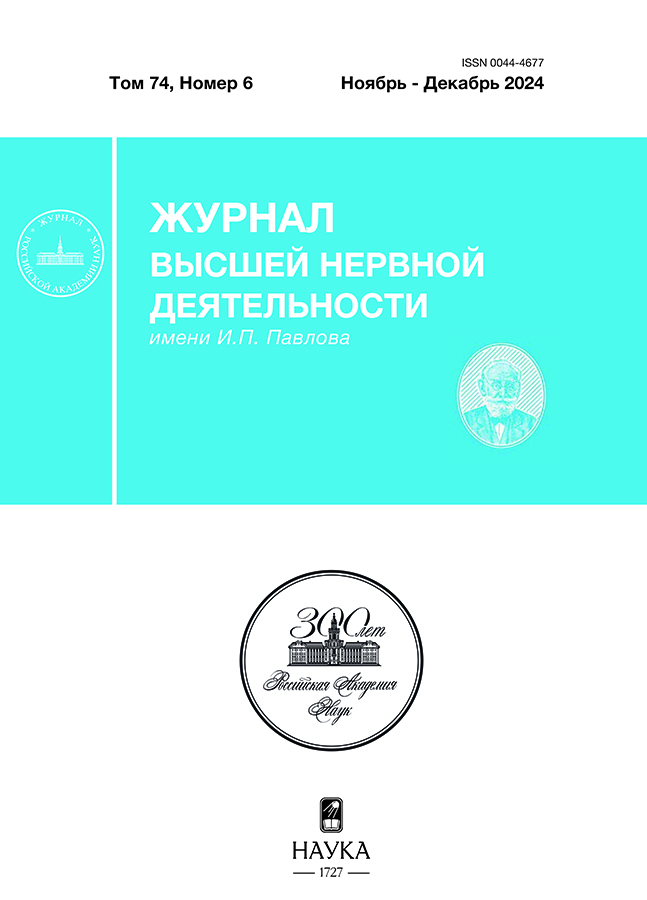“Object permanence” test for rats. First experiments
- Authors: Korolev A.G.1,2, Ogourtsov P.D.1, Inozemtsev A.N.1, Poletaeva I.I.1
-
Affiliations:
- Moscow State University
- P. Lumumba RUPF
- Issue: Vol 74, No 6 (2024)
- Pages: 756-760
- Section: МЕТОДИКА
- URL: https://cardiosomatics.orscience.ru/0044-4677/article/view/652068
- DOI: https://doi.org/10.31857/S0044467724060099
- ID: 652068
Cite item
Abstract
The description of the developed experimental set, permitting to evaluate rats solution of the “object permanence” test (be J. Piaget), which reflects animal capacity to operate one of the most simple empirical rules (by Krushinsky), i.e. capacity to solve elementary logic task. An animal, being placed in the brightly lit part of the box, is eager to run into the dark one via underpass, although after the first attempts the underpass was hidden by several means, and now an animal can solve the task overcoming the obstacle in case it operates the object permanence rule. The test solution does not require the previous learning, and it is similar to the test used in mice experiments. The test was applied in experiments with rats of five genetic groups – outbred Wistar and Long-Evans rats, rats of inbred audiogenic-prone Krushinsky – Molodkina (KM) strain, the strain derived from KM rats, selected for audiogenic non-proneness and inbred SHR strain with spontaneous arterial hypertension. The preliminary experiments (performed with an animal during one experimental day) revealed interstrain differences with the test solution prevalence in SHR strain. This test could be used in pharmacological and neurophysiological experiments with rats.
Full Text
About the authors
A. G. Korolev
Moscow State University; P. Lumumba RUPF
Author for correspondence.
Email: korolevpost@gmail.com
Biology Department; Medical Institute
Russian Federation, Moscow; MoscowP. D. Ogourtsov
Moscow State University
Email: korolevpost@gmail.com
Biology Department
Russian Federation, MoscowA. N. Inozemtsev
Moscow State University
Email: korolevpost@gmail.com
Biology Department
Russian Federation, MoscowI. I. Poletaeva
Moscow State University
Email: korolevpost@gmail.com
Biology Department
Russian Federation, MoscowReferences
- Крушинский Л.В. Биологические основы рассудочной деятельности: Эволюционный и физиолого-генетический аспекты поведения.
- Королев А.Г., Иноземцев А.Н., Полетаева И.И. Устройство для исследования поведения лабораторных крыс: пат. 2023132329/14(071447) РФ, 08.12.2023.
- Лакин Г.Ф. Биометрия. М. Высшая школа, 1990.
- Иноземцев А.Н., Королев А.Г. Инструментальное оборонительное поведение: подходы и методы исследования. Учебное пособие. М.: Москва, 2023. 200с.
- Ben Abdallah N.M.-B., Fuss J., Trusel M., Michael J., Galsworthy M.J., Bobsin K., Colacicco G., Robert M.J., Deacon R.M.J., Riva M.A., Christoph Kellendonk C., Sprengel R., Lipp H.-P., Gass P. The puzzle box as a simple and efficient behavioral test for exploring impairments of general cognition and executive functions in mouse models of schizophrenia. Experim. Neurology, 2011, v. 227: 42–52.
- Fasmer O.B., Johansen E.B. Patterns of motor activity in spontaneously hypertensive rats compared to Wistar Kyoto rats. Behav Brain Funct. 2016. 12(1): 32.
- doi: 10.1186/s12993-016-0117-9.
- Galsworthy M.J., Paya-Cano J.L., Monleon S., Plomin R. Evidence for general cognitive ability (g) in heterogeneous stock mice and an analysis of potential confounds. Genes Brain Behav. 2002. 1 (1): 88–95.
- Galsworthy M.J., Paya-Cano J.L., Liu L., Monleon S., Gregoryan G., Fernandes C., Schalkwyk L.C., Plomin R. Assessing reliability, heritability and general cognitive ability in a battery of cognitive tasks for laboratory mice. Behav. Genet. 2005, 35(5): 675–692.
- doi: 10.1007/s10519-005-3423-9.
- Pickens C.L., Holland P.C. Conditioning and cognition. Neurosci. Biobehav. Rev. 2004. 28: 651–661.
- Hand D.J., Fox A.T., Reilly M.P. Differential effects of d-amphetamine on impulsive choice in spontaneously hypertensive and Wistar-Kyoto rats. Behav Pharm. 2009. 20(5–6): 549–553.
- doi: 10.1097/FBP.0b013e3283305ee1
- Hand D.J., Fox A.T., Reilly M.P. Response acquisition with signaled delayed reinforcement in a rodent model of ADHD. Behav Brain Res. 2010. 213(2): 155–160.
- doi: 10.1016/j.bbr.2010.04.043.
- Hendley E.D., Wessel D.J., Atwater D.G., Gellis J., Whitehorn D., Low W.C. Age, sex and strain ifferences in activity and habituation in SHR and WKY rats. Physiol Behav. 1985. 34(3): 379–383.
- doi: 10.1016/0031-9384(85)90199-4
- Perepelkina O.V., Poletaeva I.I. Selection of Mice for Object Permanence Cognitive Task Solution. Neurol Int. 2022. 14(3): 696–706.
- doi: 10.3390/neurolint14030058.PMID: 36135993
- Rosenwasser A.M., Plante L. Circadian activity rhythms in SHR and WKY rats: strain differences and effects of clonidine. Physiol Behav. 1993. 53(1): 23–29.
- doi: 10.1016/0031-9384(93)90006-2.
- Silic B., Aggarwal M., Liyanagama K., Tripp G., Wickens JR. Conditioned approach behavior of SHR and SD rats during Pavlovian conditioning. Behav. Brain Res. 2023. 443:114348.
- doi: 10.1016/j.bbr.2023.114348
- Zucca P., Milos N., Vallortigara G. Piagetian object permanence and its development in Eurasian jays (Garrulus glandarius). Anim. Cogn. 2007. 10: 243–258.
Supplementary files














